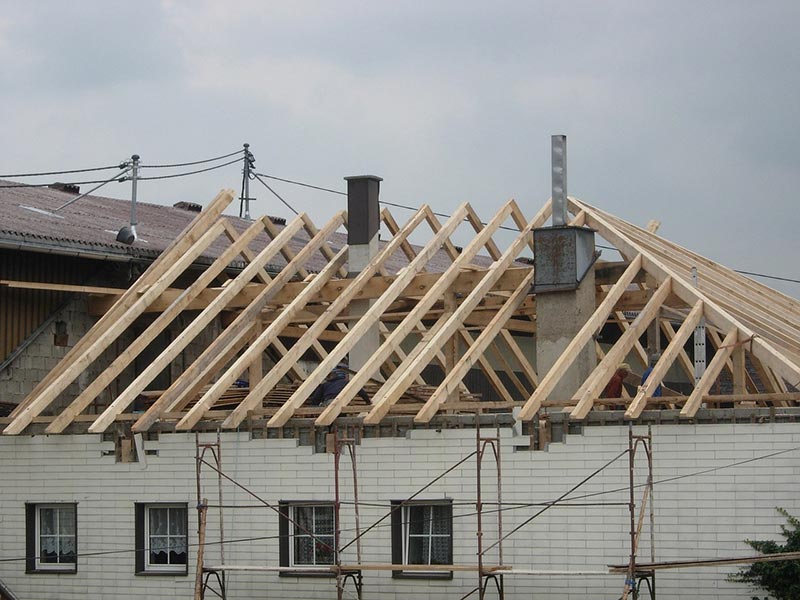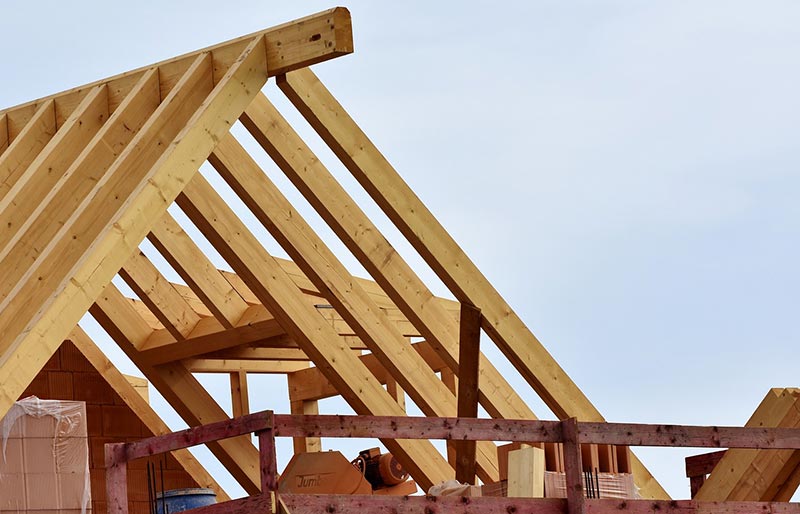What Is a Truss? Types & FAQ
-
Pete Ortiz
- Last updated:

Trusses are structural members used in engineering, made from lumber or steel. They come in various shapes, usually forming several triangles. There are many forms and sizes of trusses, depending on the type of project. Each shape is modified to fulfill a specific purpose in a building. While these structures are fascinating, many details are a mystery to most people.
If you’d like to learn more about trusses and their specific uses, continue reading this article to find an interesting and enjoyable explanation.
How Does It Work?
Trusses work by transferring the heavy load of the roof to the load-bearing walls. These structures are built in a unique way that allows them to carry incredible amounts of weight and pressure and distribute it evenly across the construction.
Trusses work by the laws of statics and geometry, which enables them to be incredibly lightweight. Trusses are an upgraded design of a beam with the most stress on its center. Trusses distribute the pressure across their entire structure with the minimal use of materials.
Trusses consist of top and bottom chords, with the vertical chords collectively referred to as the webbing, typically in triangular shapes. Trusses can be made from steel or lumber, depending on their purpose and use. The triangles that the vertical connections make are anchored and cannot get distorted by significant amounts of stress.

What Are the Different Types of Trusses?
There are many types of trusses depending on when and what they are used on. In the text below, you can find some of the most common trusses used in residential and commercial buildings or structures.
- Warren Truss: Warren trusses consist of several equilateral triangles, depending on the project size. The triangles provide a sturdy structure, making this design perfect for bridges. For larger projects, you can add vertical members to lengthen the span of the truss.
- Gable Truss: Gable trusses are primarily used in roof structures at the end of each roof, providing additional support. They consist of two top chords, one bottom chord, and multiple vertical members connecting them.
- Pratt Truss: The Pratt truss system combines vertical and diagonal members, where the diagonal members are in tension, and the vertical ones are in compression. The diagonal pieces are always positioned to face the center vertical members. The Pratt truss is designed to support bridges, although many accommodations have made it suitable for residential roofs.
- Vierendeel Truss: Vierendeel truss only consists of vertical, parallel chords without diagonal members. These trusses are primarily used in bridges and are not as common as roof support. Nevertheless, the lack of diagonal members makes these trusses ideal for adding windows and doors.
- King-post Truss: The king-post truss is one of the most common trusses used for roofs. Its design is simple yet practical. It consists of two top chords, one bottom chord, and a vertical center post. This design makes it very aesthetically pleasing for roofs, and the bottom chord can be curved to provide a more elegant appeal when exposed.
- Queen-post Truss: The queen-post truss is similar to the king-post truss without the middle vertical post. Instead, this truss has two shorter poles connecting the top and bottom chords. These trusses are much more suitable for larger projects, and the space between the two vertical poles makes the design versatile and practical.
Where Is It Used?
Trusses are used in several commercial and residential buildings. It is used as structural support when needed, although, for some buildings, it also brings a certain rustic and elegant appeal. Trusses are very versatile and frequently used on a broad range of structures—from bridges, airport terminals, sports stadium roofs, and aircraft hangers to home and cathedral roofs. Trusses can be used anywhere where there is a need for long spans, horizontal stability, and heavy roof loads.

Advantages of Trusses
There are many advantages of using trusses in certain buildings, and now that you know how these structural components work, you can understand their significance.
- Affordable and easy to install.
- Trusses provide the roof with much more stability and support more weight than roofs without trusses.
- Roofs with trusses last much longer and need fewer repairs over time.
- Installing trusses in your home allows you to make more changes and customizations to the inner walls, which don’t have to endure as much weight from the roof anymore.
Disadvantages of Trusses
Since trusses are such a significant advancement in the history of construction work, they have very few flaws.
- The vertical and diagonal members take up space in your attic.
- They are not suitable for every roof type.
- They require a professional team to preassemble them and install them in your home with the need of extra equipment, depending on the size of the project.

Frequently Asked Questions (FAQ)
How Much Weight Can a Truss Hold?
The load-bearing capacity of one truss depends mainly on the project’s size and the materials used. Typically the dead load capacity of a roof truss is between 7 and 10 pounds per square foot. However, you’ll have to consider the hanging weights to calculate the weight a truss can hold.
What Kind of Lumber Is Used for Roof Trusses?
For crafting roof trusses, contractors mainly use hardwood and softwood timber. The lumber has to be strong, firm, dense, yet somewhat lightweight. The best wood used for this project is red cedar, yellow pine, and seasoned fir.
Conclusion
After reading about trusses, what they are, and how they are utilized, you will get a much clearer picture of how incredible and clever these structures are. Trusses are meant to carry the roof’s heavy load and transfer it to the walls, creating a stable building. Trusses are also used in bridge building and for many other incredible purposes. Their durable, versatile, and long-lasting properties make them necessary in today’s construction projects.
- Related Read: 2 Types of Roof Framing — Everything You Need to Know!
Featured Image Credit: dorisrothbauer, Pixabay
Contents


